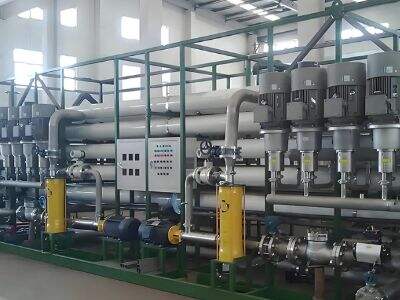Today we will be learning about something that goes by the name SWRO and how it affects our coastal ecosystems. SWRO = seawater Reverse Osmosis System It is a unique used process to transform salt water that we come across in the ocean into fresh water that we can drink, bathe and do a lot of things with. Fresh water is crucial because we all use it to drink, cook, and wash on a daily basis. But it matters how we treat SWRO, since it has the capacity to change the environment that envelops us, and affect the animals that inhabit it.
How SWRO Affects The Environment
SWRO use can provoke changes in the environment. That means even smallest action can exercise enormous influence to once many things around us. For example in SWRO, we generate clean water but surplus of salty water is left waste. This brine, which is saltwater, must have somewhere to go. If we just dump it back in the ocean, it can make the ocean water saltier. And these shifts can be difficult for animals and plants to live with, so can make it hard for them to survive and prosper in their habitats.
One of the first things to understand is there are numerous varieties of plant and animal life in the ocean. Those that are not adapted to such high salinity will perish you see; and when the salinated water gets too salty — boom. Or some fish and plants may not be able to live in too water salty, which will lead to fewer fish in the ocean, which will impact the entire food chain.
The Impact on Ocean Animals
SWRO also impacts the ocean animals. In order to utilize SWRO, reverse osmosis ro water filtration system we typically build big systems referred to as desalination plants. These plants are crucial to the process — but they occupy a lot of space animals must live or breed. These plants can also enable noise and disturbing pollution to animals, so the construction of these plants can be destructive to the natural habitat. This could make it harder for them to find sources of food and mates, required for them to survive.
When SWRO is used, the salty water in certain cases can form places called dead zones. Within the dead zones, the water is too salty and does not have oxygen that living animals need. This can also lead to a reduction in the fish and other marine life population, which can interfere with the balance of the ocean ecosystem. If we lose some species, it can have a domino effect on other plants and animals that are dependent upon them.
SWRO: Unforeseen Ramification
The impact of SWRO can sometimes be unexpected and other than you would anticipate. We might imagine we are simply producing new water, but it can give rise to different forms of trouble that we had not envisioned. For example, in the scenario in which we utilize SWRO reverse osmosis filtration system, we employ seawater within our operation. This water is not merely salt and water. It also carries tiny living organisms such as microorganisms and bacteria that are significant to the health of the ocean. Microbes: Tiny Wonders of the Ocean Ecosystem These minute organisms also sustain the balance of the ocean ecosystem.
By draining this water,Ultrafiltration Systems we can be draining away what these creatures require in order to survive. (In fact, this can hurt the whole ocean ecosystem and leave us with less healthy creatures.) Down the line, we might experience effects we're not looking for, which could prevent the ocean from rebuilding and supporting life.

